The Culture Of Nepal
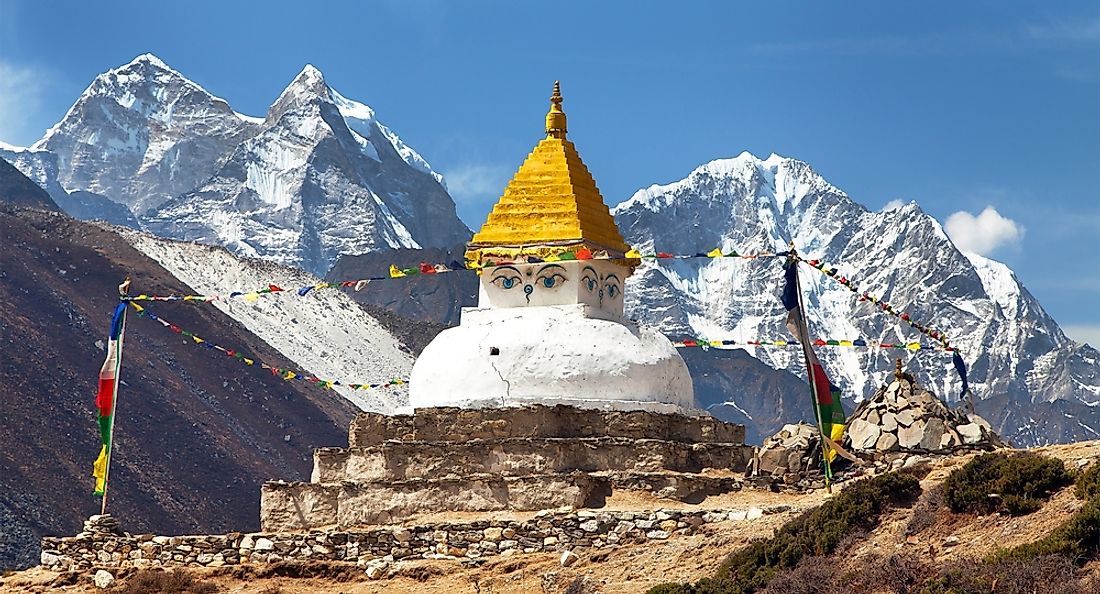
- Nepal is situated in the Himalayas and is a country that houses multiple cultures and ethnicities.
- 123 languages are spoken in Nepal.
- Though volleyball is the national sport, football (soccer) is the most popular.
- The population of Nepal is mostly Hindu, with the next most-practiced religion being Buddhism
- A lot of performance and art in Nepal is inspired from Hindu religious mythology.
Nepal is a sovereign state in South Asia, situated in the Himalayas. This landlocked country has a population of approximately 29 million people in 2020 and borders China and India. The country’s capital and largest city is Kathmandu. The country has a rich, multi-ethnic and multi-dimensional culture based on ancient traditions and social customs. The Nepalese culture is closely related to the culture of the more massive Indian Sub-continent and is influenced by the cultures of India and Tibet.
Ethnicity, Language, And Religion
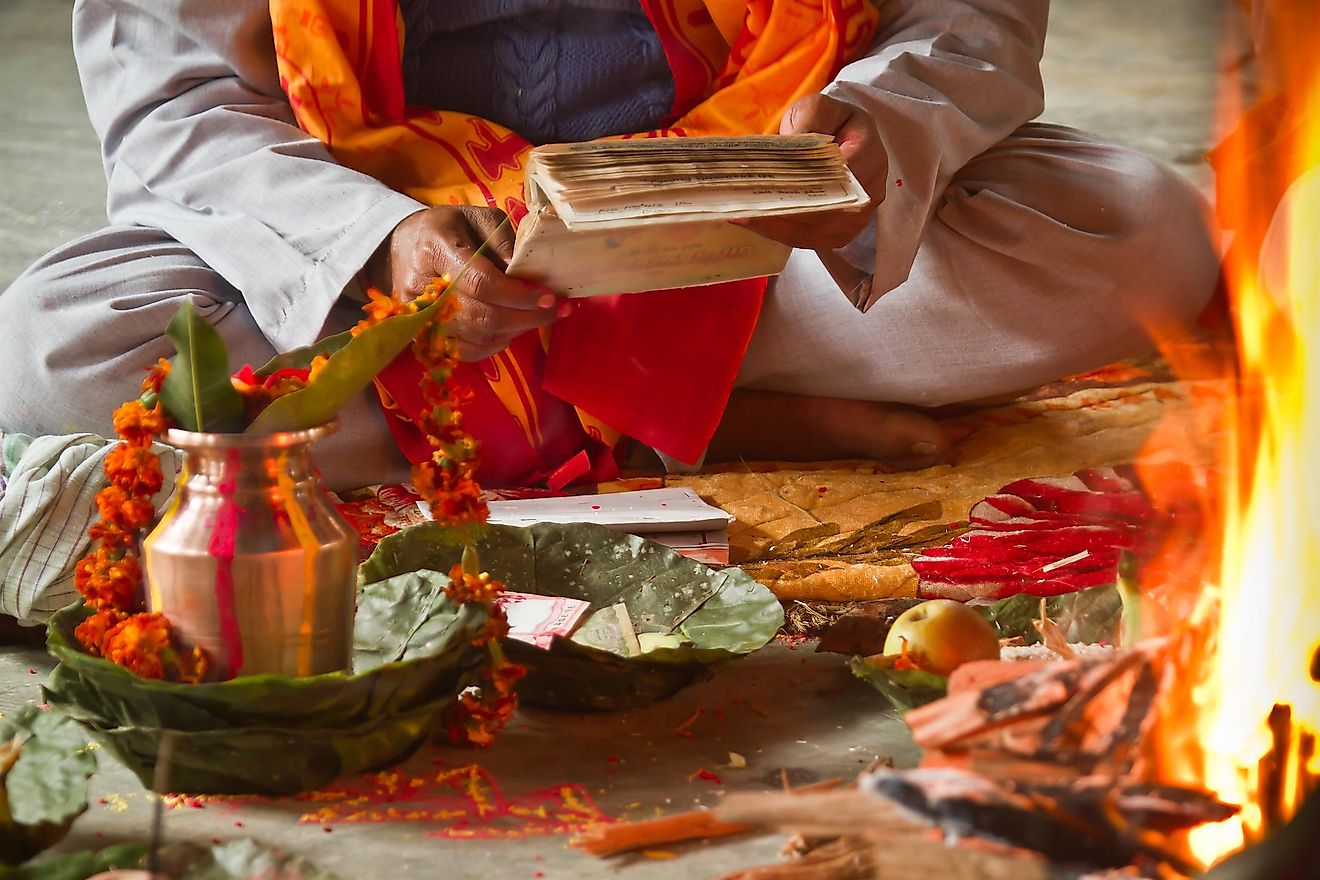
Nepal is a multiethnic and multicultural country that came into existence through the progressive, political merging of smaller kingdoms and principalities such as Videha, Mustang, Limbuwan, and Madhesh. The northern part of the country is inhabited by Limbu, Rai, and Mongolian people while the Sherpa, Magar, Gurung and Lama people inhabit the western and central regions.
There are approximately 123 languages spoken in Nepal. The major language is Nepali, spoken by 44.6% of the population as mother tongue. Other main languages include Maithili, Tamang, Tharu, and Bhojpuri. There are two main religions in Nepal; Buddhism and Hinduism. However, some Nepalese practice a unique combination of the two religions. The majority of the population, 80%, are Hindu while 11% practice Buddhism. Islam is practiced by about 3.2% of the population. Christians are \bout 1% of the population.
Cuisine
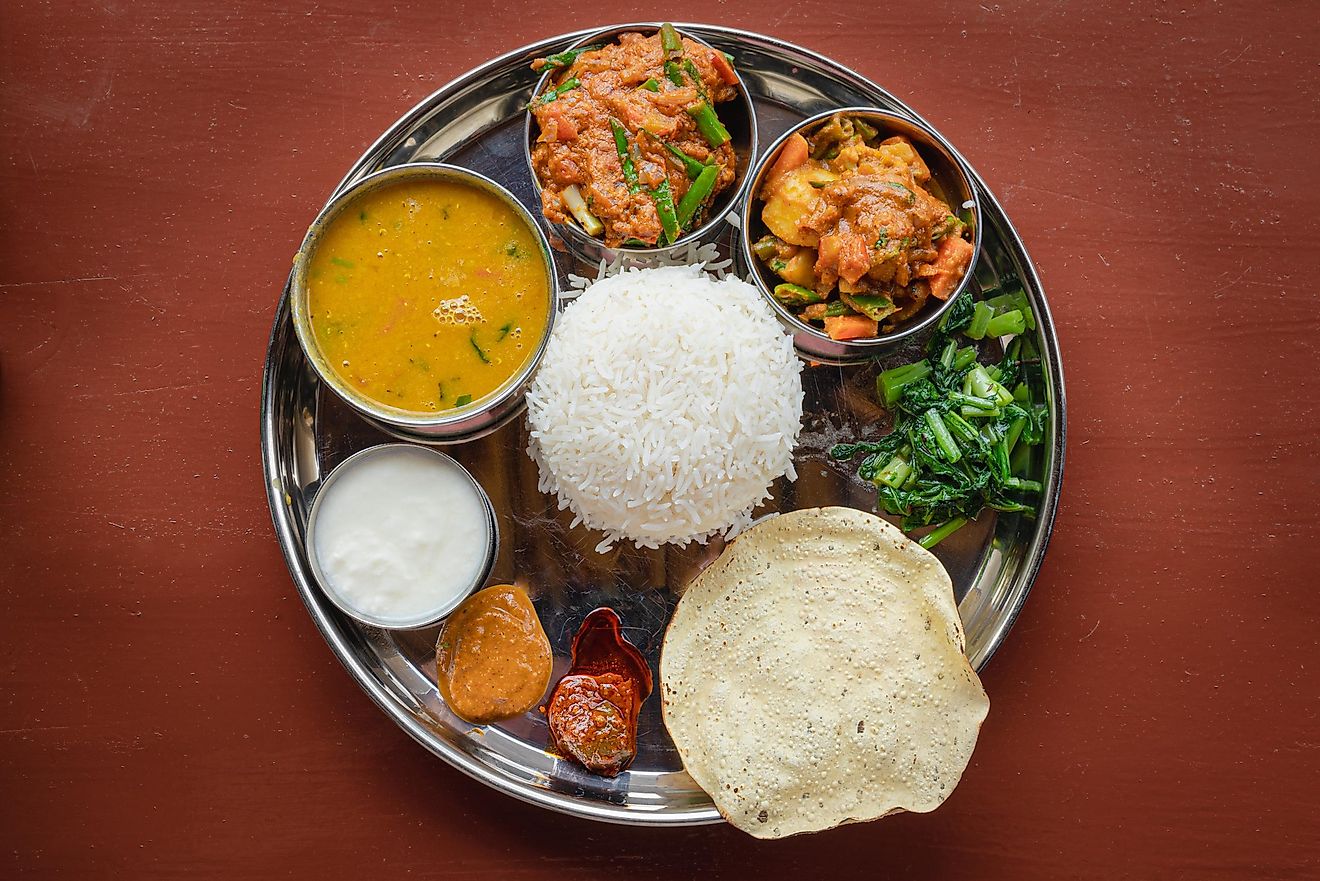
Nepalese cuisine is comprised of a variety of cuisines from the different ethnicities of the country and has been influenced by Asian culture. In most instances, a meal is never complete without a sizeable amount of rice. Rice is mainly served with daal, a spiced lentil soup, and vegetable curry called tarkari.
Meals are eaten twice a day; late morning and early evening. Mostly, the meals also include “achar” which pickled vegetables or fruit. Rice may also be supplemented with flatbread known as “roti.” Traditionally, people eat from their individual plates using their hands and while seated on the floor.
Nepalese Traditional Clothing
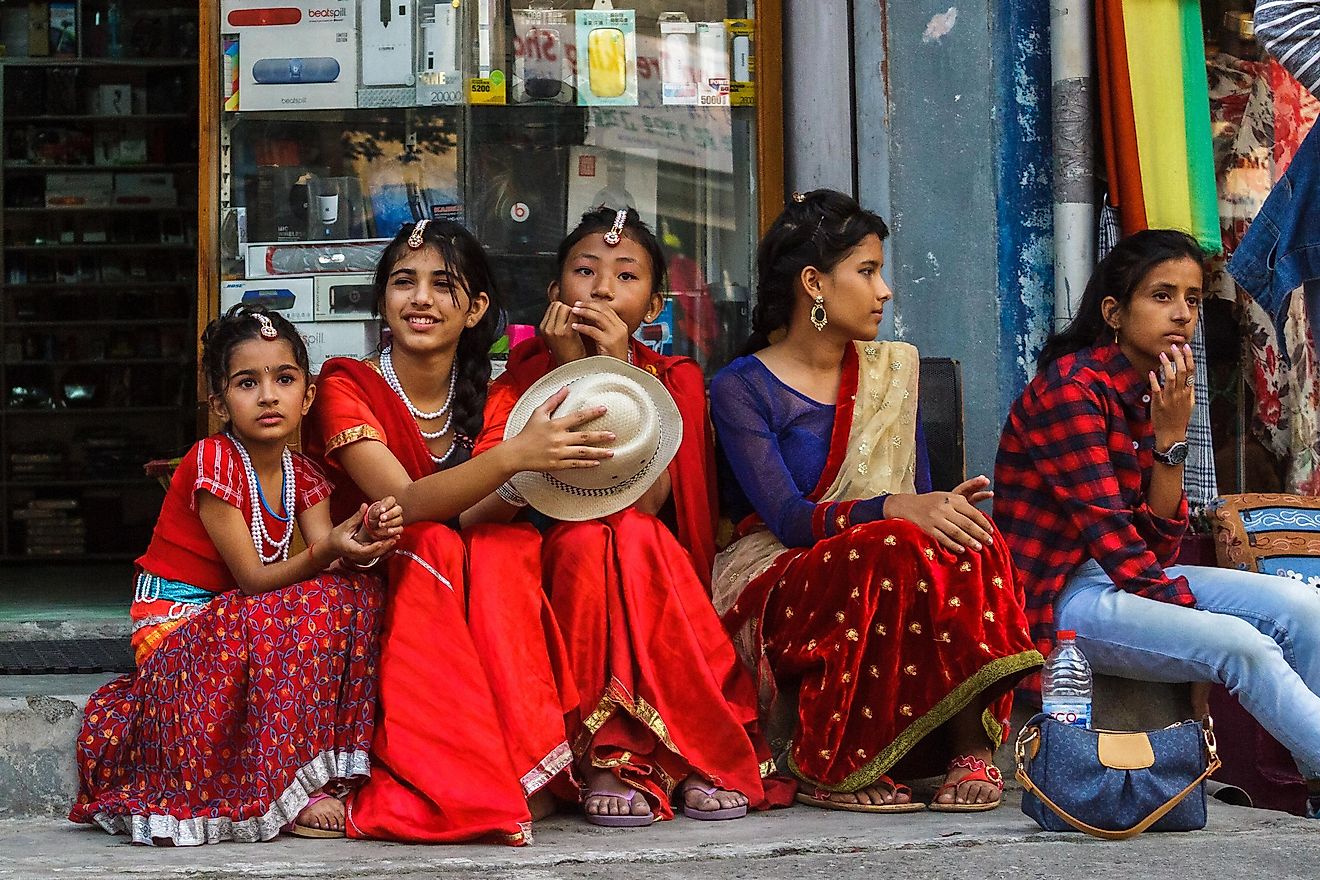
Each of the ethnic groups in Nepal has its own traditional clothing. However, most of these follow the same pattern. Men’s traditional clothes are referred to as “Daura Suruwal.” Daura is a double-breasted shirt while Suruwal are simple baggy trousers that fit tightly at the ankle. Other items of clothing include jackets and a vest. The combination of a jacket and Daura Suruwal is considered informal traditional wear. A Daura does not have buttons or clasps and is often held in its place by four ties, two close to the waist and two near the shoulders. The national hat is called “Dhaka topi” and is often worn by the men.
The traditional outfit for the women is called “Kurta Suruwal.” It consists of a long blouse, sleeveless or short-sleeved and usually extending below the hips, light baggy pants, and a large scarf. The clothing is loose and usually brightly coloured and with patterns. The scarf is also long and matches with the rest of the outfit. It is draped over the body.
Literature, Art, And Craft
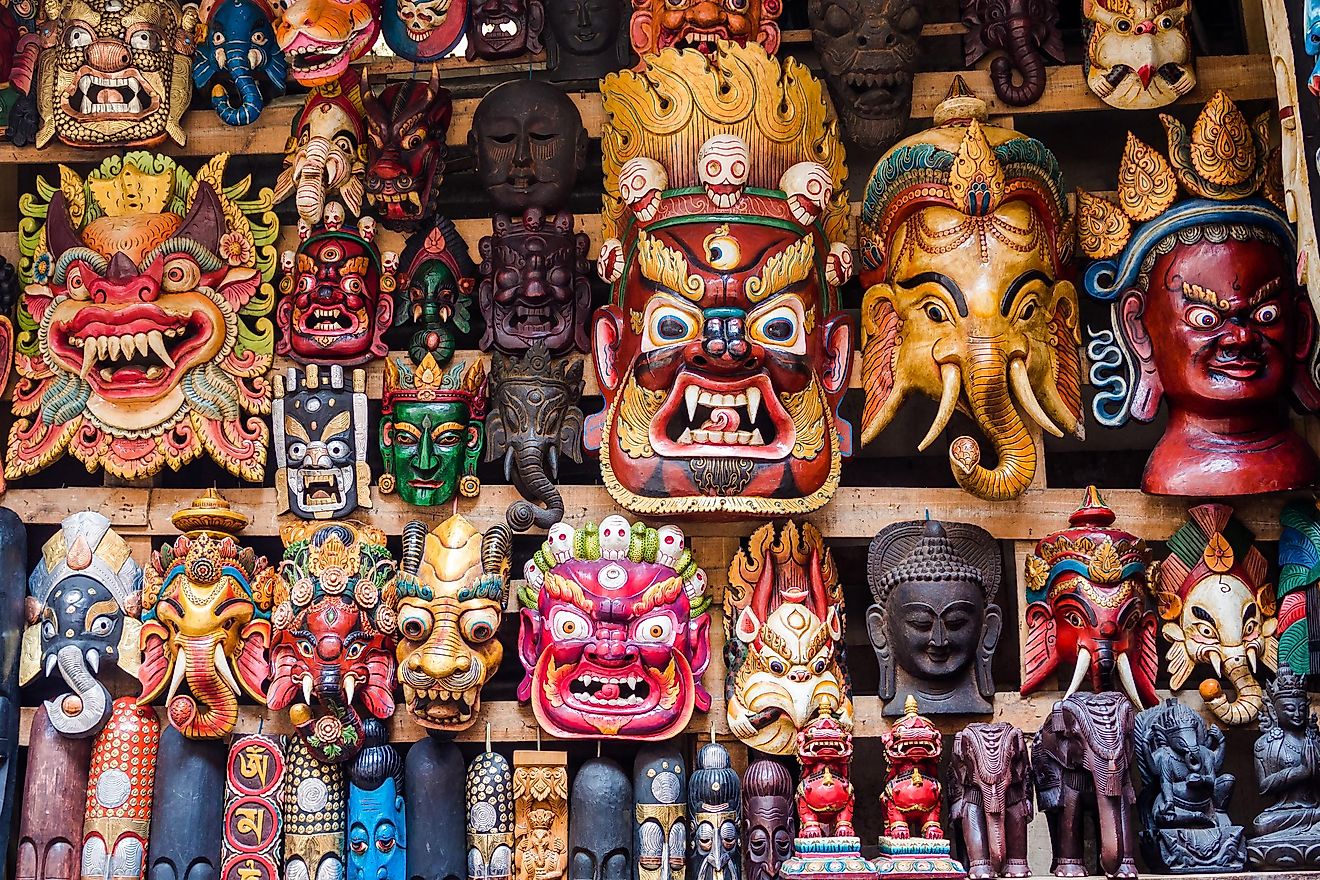
Nepalese literature dates back to the 19th century with the adaptation of the Hindu “Ramayan” by the Bhanubhakta Acharya for the Nepali readership. The development of literature in the country has been hampered by the heavy government censorship and control, forcing most authors and poets to seek publication outside the country. Several Nepali authors have been actively writing innovative Nepali literature since the Democratic revolution of 1991. Some of these authors include Khagendra Sangraula, Yuyutsu Sharma, Narayan Wagle, and Toya Gurung.
Much of Nepalese art is considered religious. The Newar people are responsible for most of the examples of the traditional art and architecture of Nepal. They are known for craftsmanship, Paubha painting, and sculpture. The Newari create a caste-bronze statue of Hindu and Buddhist deities.
Performance Arts
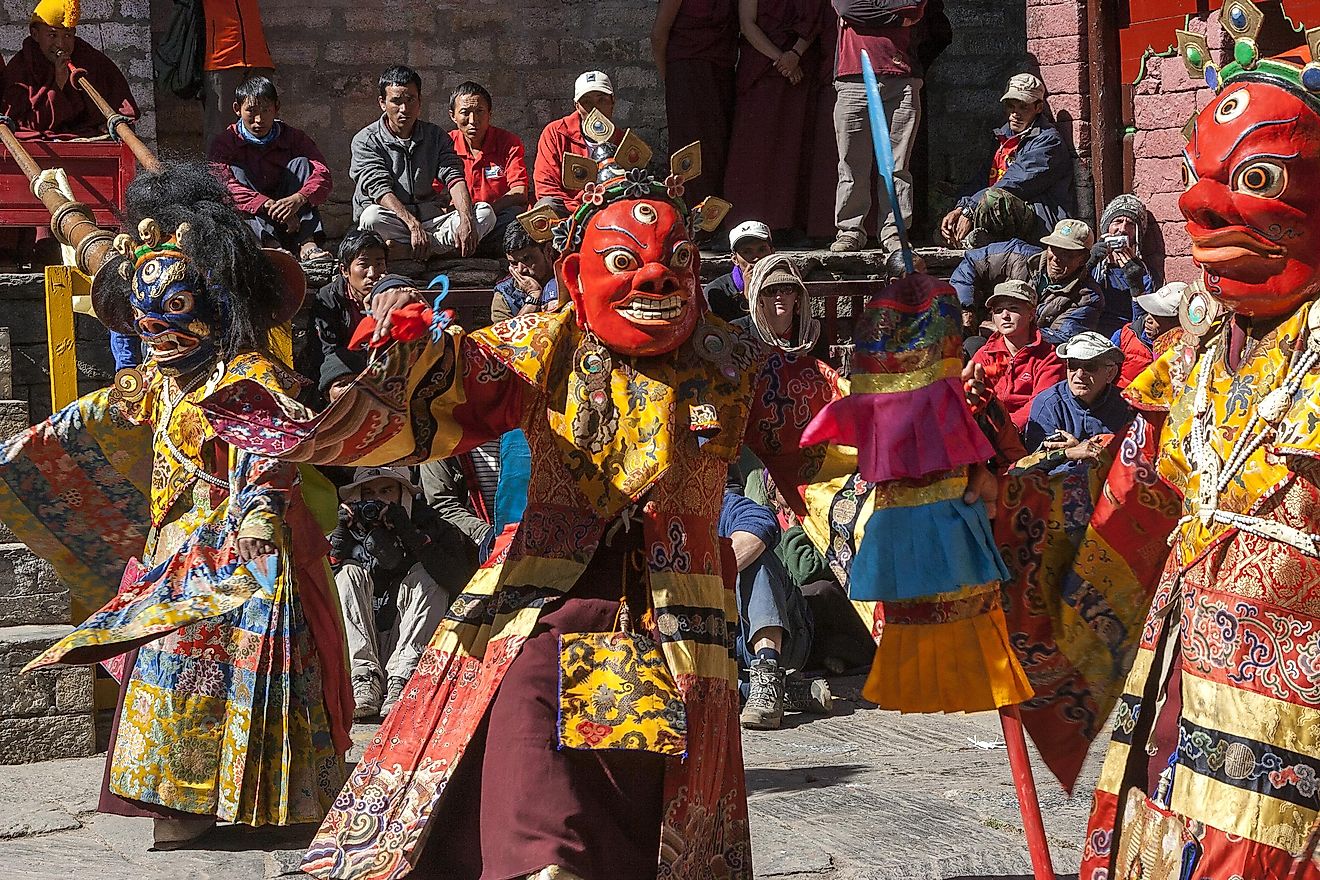
Performance art also focuses on religious themes drawn from Hindu epics. Political satire is also very common as well as comedic forms. Nepal has a rich musical heritage with several distinctive vocal styles and instruments. Music is popular across all age groups and has become a marker of identity, especially among the younger generation. The older generation prefers folk songs and religious music while the younger generation is attracted to western and experimental film music. Performance art such as music and dancing is a very important part of festivals and celebrations. The end of the plowing season is often marked by songs, shouts, and dances.
Sports
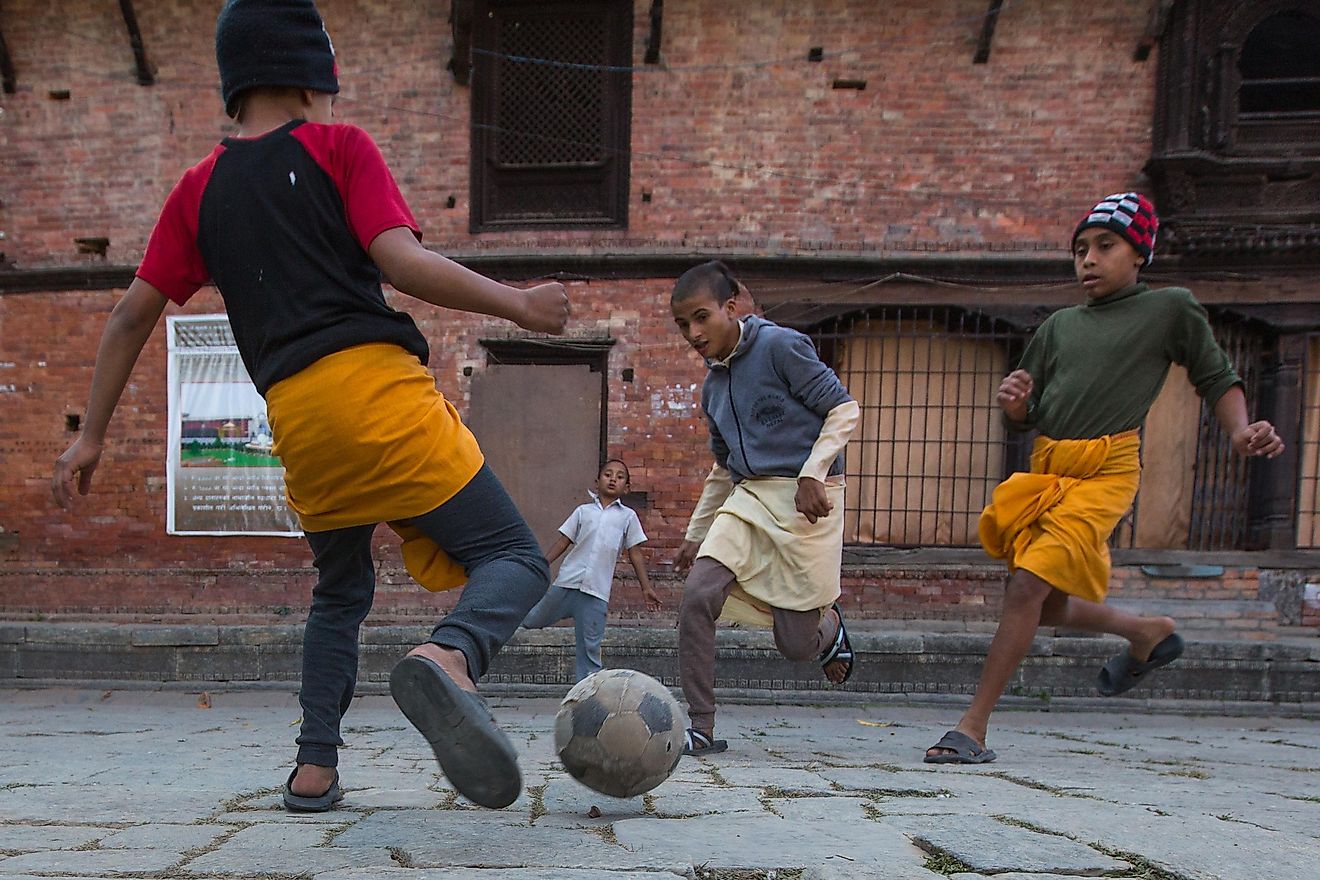
Several sports are played in Nepal, both at the national and international levels. The most popular sport in the country is football (known in the US and Canada as soccer), followed by cricket. The Nepalese national cricket team has even participated in the World Cup and other international competitions. However, the national sport of Nepal is volleyball.
The sport with the most tournaments in Nepal is football, and they are held across the country. The Nepal football national team won gold in the 2016 South Asia Games. According to the 2018 FIFA ranking, Nepal holds position 165.
Life In Society
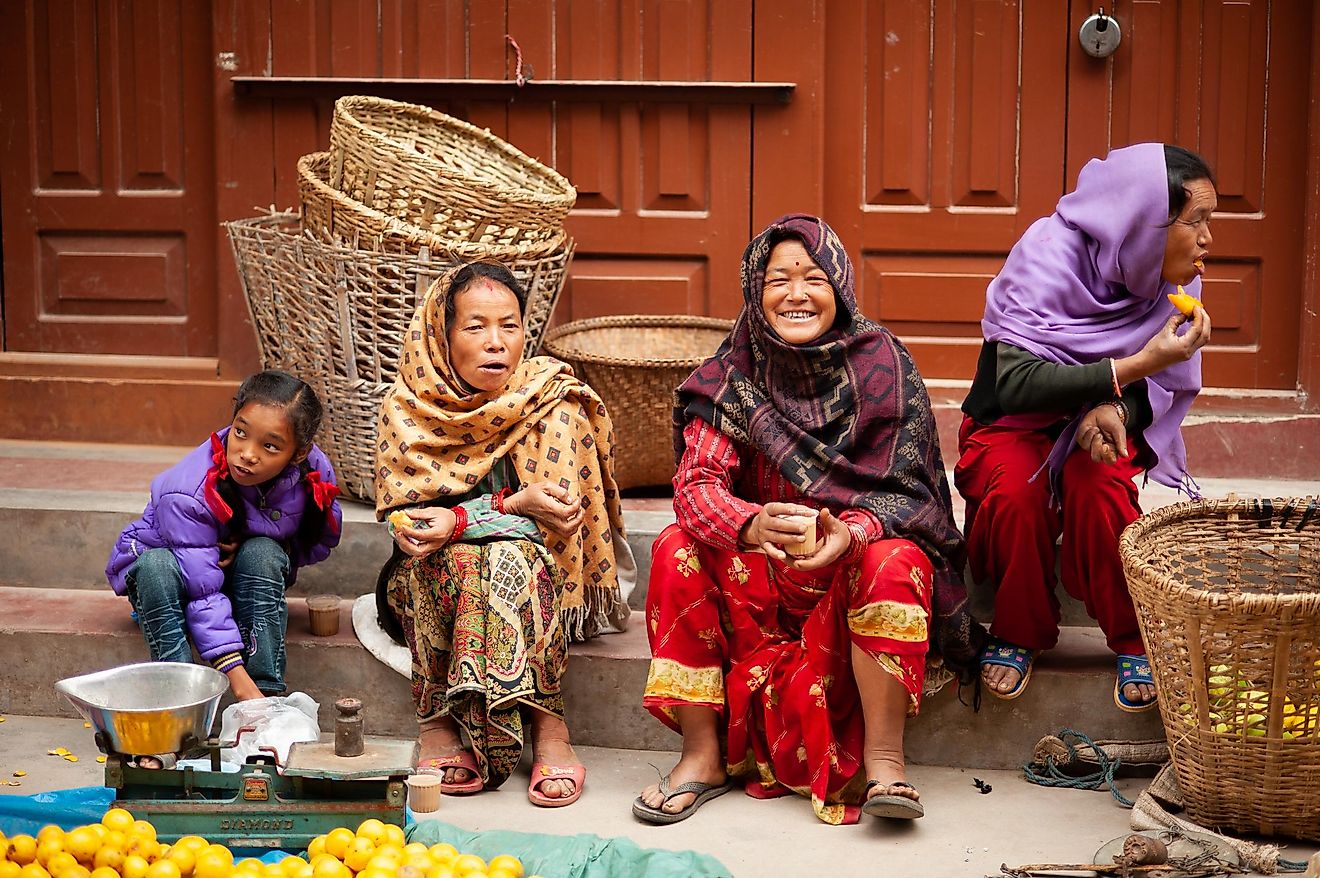
Nepal is a multi-ethnic society with a rich culture and religious practices. Visitors are required to embrace native customs while visiting certain places such as temples. Like the locals, they must put on a respectable dress with no leather, remove their shoes, and ask for permission before entering the Hindu temple. Nepalis are generally friendly. However, public display of affection is not appreciated.
Superstition still rules the country. Interestingly, praising a baby’s appearance or walking on spilled rice brings bad luck. Red chillies are almost everywhere and are believed to drive away the evil spirit. The family is very important in Nepalese culture. Like much of the world, for a very long time, women were honored as mothers and had little access to education and political power. Men were the heads of their respective families and were required to provide for them. While there has been progress for the rights of women in recent decades, this progress has been slow to reach the regions outside of the urban centres.











